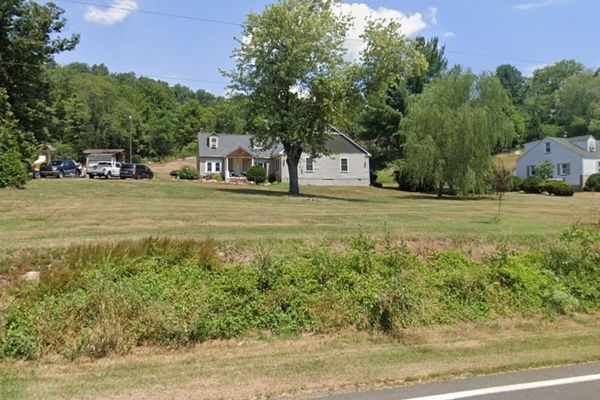
Much of Australia will dodge a black summer this year, but large swaths of the country will still burn, new analysis reveals.
“If you have fuel, fire, wind speeds and warm temperatures, you will get bushfires,” Rob Webb, CEO of the National Council for fire and emergency services (AFAC), told Crikey.
Today AFAC released its seasonal bushfire outlook for spring. The state-by-state and territory-by-territory forecasts, based on intel from local fire authorities, are expected to set the tone for the nation’s 2023-24 summer season of fires.

Webb said the nation’s coming bushfire season will be worse than the three wet summers past, but not on a par with the catastrophic 2019-20 summer that devastated south-east states. In short: above-average rainfall has stimulated grass and groundcover growth, but a rapid swing into hot and dry conditions is making all this excess fuel ripe to burn.
“We’ve had three years of wet conditions, and while that’s dampened the earth, it’s also led to grass growth that’s fast drying out,” he said. “That means we’re mindful of fast-moving grassfires.”
Nominated high-risk areas include the Northern Territory, Queensland, NSW and smaller regions in Victoria and South Australia.
Earlier this month, NT authorities projected that 80% of the territory would burn by the end of March 2024. CEO of the Central Land Council (CLC) Les Turner said it was unlikely the scale of burning would eventuate, but he credits this year’s fire-friendly conditions to excessive rainfall that’s shortened the prescribed burning season and encouraged growth of the invasive and highly flammable weed buffel grass.
“[Buffel] has accumulated with the past three years of high summer rainfall and will grow back very quickly after it’s burnt. This means that native plants don’t have a chance to recover and go to seed before the next fire, leading to a slow decline in the number of large trees,” he told Crikey.
“Rivers and creeks used to be good firebreaks because they didn’t have grasses that burnt easily. Now, with buffel, they’re full of fuel and carry fires further instead of stopping them.”
Turner said wet conditions, often preceded by hot weather, have dramatically reduced the window of opportunity for Indigenous peoples to properly burn country: “They know the right time to burn to protect natural and cultural assets and prevent large fires. A lack of people on country in remote central Australia means that the country’s not being managed as it always has, leading to hot landscape-scale fires.”
In the years since the devastating 2011-12 bushfires that wiped out 80% of the territory, Turner said land management had improved, particularly with the use of prescribed aerial burning in the cool season. In June this year and last year, Warlpiri, North Tanami and Tennant Creek CLC rangers, in partnership with the Indigenous Desert Alliance, used planes to burn more than 6000 square kilometres.
A spokesperson for the NT Environment, Parks and Water Security Department told Crikey the department had also conducted fuel-reduction burns and clearing, particularly around assets, but excess fuel loads had been difficult to manage due to high moisture levels in soil.

Despite the 3000-plus bushfires between June and August in urban and peri-urban areas of the Northern Savanna, Arnhem and Top End regions, it’s business as usual for these parts going into spring and summer. The AFAC report said that was due to fire scars and carbon abatement programs that mimic “mosaic-style fire scar coverage”.
The problem areas for the NT (and regions most at risk across Australia) are the Barkly, Lassiter, Simpson and Alice Springs districts.
“Every time there’s been an extended period of high rainfall in the past, such as 1974, 2000, 2011, there have been fires throughout central Australia,” Turner said.
In South Australia, deputy chief officer Georgie Cornish said her state had also seen considerable drying out of fuel above ground and under the soil, particularly in the Nullarbor (south-west) and Mallee Heath areas (south-east approaching the Victorian border).
“We’ve seen the ground really dry out and what that means is the soil simply won’t have moisture in it,” Cornish told Crikey. “That means those areas catch really easily.”
Cornish said that unlike NSW and Queensland where fire scars pose a reburn risk, SA’s burn cycle was approximately seven years due to the oil content of the low-lying shrub mallee heath, which burnt on masse during SA’s 2019-20 season.
However, SA is facing an increased risk of grassfires compared with other states due to the excess plantation of wheat crops. Cornish said the Ukrainian-induced wheat crisis has prompted farmers to boost their yields as prices were up. The result was “more continuous crops” that were more susceptible to fast-moving grassfires.
In the eastern states, fuel loads were ripe for fires, but none were expected to tip into extreme territory this bushfire season.
NSW Rural Fire service inspector Ben Shepherd said his state would also be on high alert in regions with excessive grass growth (particularly west of the divide and throughout the Hunter). Other priority regions were areas that had not recently burnt, where fuel loads are high (including the central coast, in and around Sydney, down through the Illawarra, and parts of the Shoalhaven) and “fire scars” from 2019-20 where regrowth had altered vegetation and increased fire susceptibility (mid, north, and south coasts).
Already the state had seen a dramatic rise in bush, grass and scrub fires — this July registered 1300 fires compared with 300 in the same period last year.

“There’s a lot of scrub and heath that has grown back, while the canopy and treetops haven’t repaired themselves,” Shepherd said. “Given the right conditions on a hot, windy day, we could see some very turbo fires, although not necessarily long-lived.”
It’s a similar story in Queensland, where superintendent James Hague said fires were starting to pop up — particularly in the southern half of the state — due to below-average rainfall and a westerly wind that lowers humidity: “Westerly winds herald more fire weather.”
Hague said significant rainfall in central and northern parts of the state throughout the winter months had kept fires at bay, however, if these areas began to dry out, the risk of wildfire would increase.
Victoria was one of the few states bracing for forest fires, particularly in unburnt bushland surrounding coastal communities. Authorities were also closely watching agricultural zones in the central, western and northern parts of the state for early-onset burns. Overall, Webb said the 2023-24 fire season wouldn’t be “record-breaking” — with fire agencies anticipating 2024-25 to be much worse — but he reiterated that a high likelihood of El Niño meant the “dial is flipping back away from widespread flooding”.








